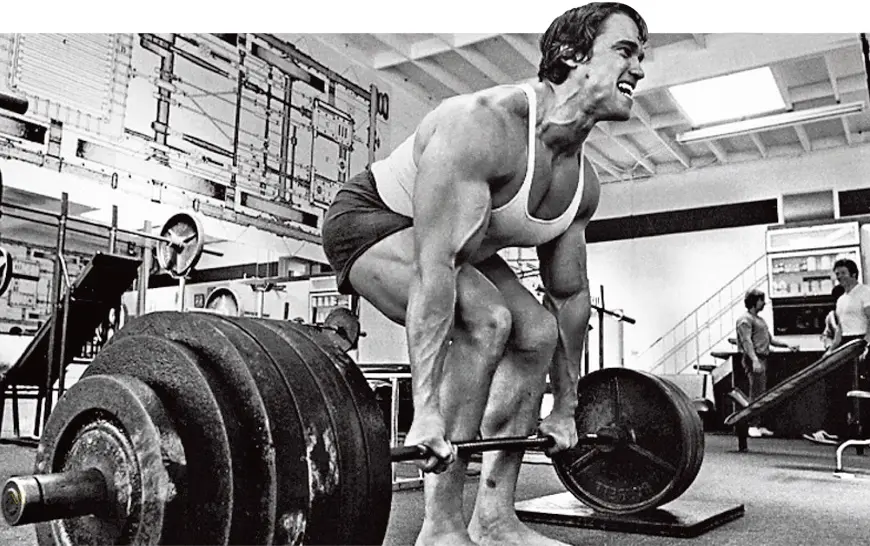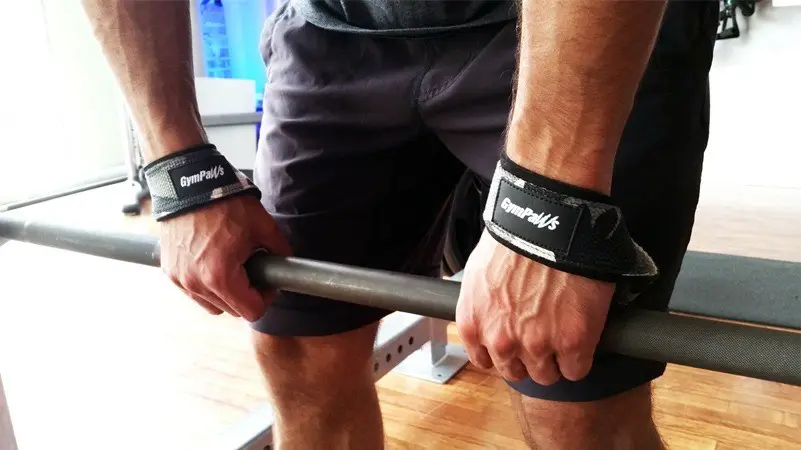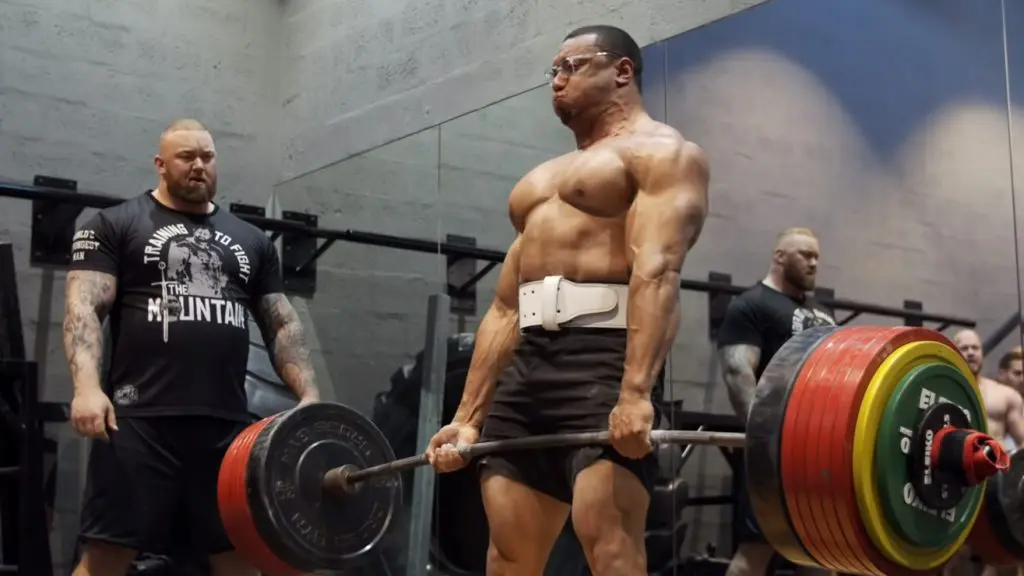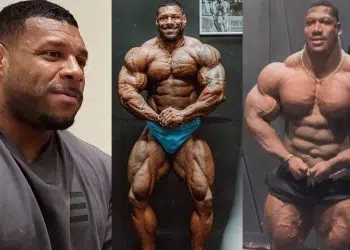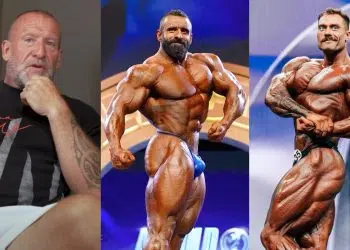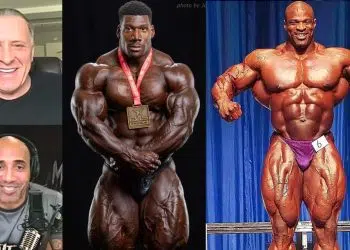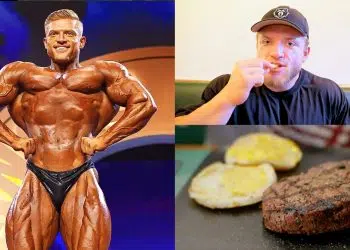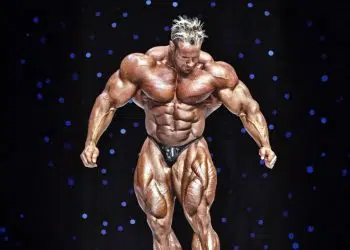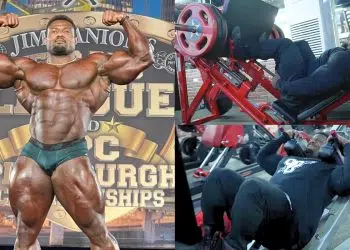Of all the exercises you can do in the gym, deadlifts are arguably one of the most important. Deadlifts build and strengthen your posterior chain, which is a short and snappy way to describe all the muscles on the back of your body.
The main muscles involved in deadlifts are (1):
Gluteus maximus – the large muscle on the back of your hips, also known as the glutes or butt. This muscle is your main hip extender.
Gluteus minimus and medius – smaller muscles in the glute complex that are located on the outside of your hips. They are responsible for hip abduction.
Erector Spinae – the muscles that run up either side of your spine, from your pelvis to your neck. These muscles work together to extend your spine and also prevent your spine from rounding.
Core – the collective term for the muscles that make up your midsection, including your rectus abdominus or abs, and your obliques. Your core is your natural weightlifting belt and helps stabilize your spine.
Level Up Your Fitness: Join our 💪 strong community in Fitness Volt Newsletter. Get daily inspiration, expert-backed workouts, nutrition tips, the latest in strength sports, and the support you need to reach your goals. Subscribe for free!
Hamstrings – the muscles on the back of your thighs. These muscles flex your knees and also work with your glutes to extend your hips.
Quadriceps – also known as quads, these are the muscles on the front of your thighs. The Quads main job is knee extension.
Adductors – there are three adductor muscles (Longus, Brevis, and Magnus), and they are the muscles on the inside of your thighs. These muscles draw your legs in toward the midline of your body.
Gastrocnemius and soleus – the calf muscles. The gastrocnemius is the larger, upper calf muscle. The soleus is the smaller, lower calf muscle. Your calf muscles plantarflex (extend) your ankle.
Latissimus dorsi – the large muscles on the sides of your back. The main functions of your lats are extension and adduction of the shoulder joint.
Trapezius – the kite-shaped muscle of the upper back. The traps are responsible for elevation, depression, and retraction of the shoulder girdle.
Rhomboids – the muscles between your shoulder blades. These muscles work with your trapezius to retract your shoulder girdle.
Also, deadlifts teach you to lift heavy objects off the floor safely. This is a handy skill that most people need to know. However, there are different ways you can do deadlifts, so you must choose things like reps, poundage, and training volume so that they reflect your training goals.
Deadlifts for bodybuilding
If you want to build muscle mass, deadlifts can help. A well-developed back will make your physique stand out in a crowd and shows that you take your training seriously. Pulldowns and rows can all help you build a bigger back, but for serious back mass, deadlifts are hard to beat.
Make sure you consider the following when deadlifting for muscle growth.
Conventional deadlifts vs. sumo deadlifts
There are two main deadlift styles – conventional deadlifts and sumo deadlifts. Conventional deadlifts involve a hip-width stance and a steeply inclined torso, which increases back, glute, and hamstring activation. In contrast, sumo deadlifts feature a much wider stance and more upright body, which takes the stress off the back and puts it on the quadriceps.
Sumo deadlifts are great for powerlifting as they reduce your range of motion so you can lift more weight. But, if you want to build muscle mass, conventional deadlifts are better. There is nothing inherently wrong with sumo deadlifts, but the conventional style much more effective for bulking up your back.
Standard barbell or trap bar?
There are two types of bar you can use for deadlifts – a standard barbell and a trap bar. A standard barbell places the load in front of your feet. This means you’ll have to use your back to keep your chest up and lift the weight from the floor.
A trap bar, also called a hex bar, places the weight in line with your feet. This allows for a more upright torso, which takes the stress off your back and puts it on your quads.
If you are deadlifting for a bigger back, standard bar deadlifts are your best choice. But, if you want to focus more on your quads, opt for trap bar deadlifts. Because of this, you may want to do standard bar deadlifts on back training day and do trap bar deadlifts on leg training day if you’re going to include both these exercises in your workout schedule.
Reps, sets, weights, and rest
Most bodybuilding experts agree that the best rep range for building muscle is 5-12. This allows you to use heavy enough weights to develop a decent level of strength, but also means you can accumulate the necessary time under tension to trigger muscle growth.
Time under tension, or TUT for short, refers to the duration of your set. If your set is over in just a few seconds, you won’t produce enough muscle microtrauma (damage) and metabolic stress (lactic acid) for your muscles to grow. But, if TUT is too long, you will end up developing endurance rather than muscle size.
The 5-12 rep range is the sweet spot between pure strength and endurance. If you want to build size, most of your training should take place in this middle ground.
When training in the 5-12 rep range, three to five hard sets should be enough to fatigue the target muscles. If you do too many sets, you may find that your technique starts to break down. This will make your workout not only less productive, but it will also increase your risk of injury.
Level Up Your Fitness: Join our 💪 strong community in Fitness Volt Newsletter. Get daily inspiration, expert-backed workouts, nutrition tips, the latest in strength sports, and the support you need to reach your goals. Subscribe for free!
Regarding rest, short to moderate-length rests are best. 1-2 minutes should be long enough to catch your breath, grab some water, and get ready to do your next set of deadlifts.
Finally, choose weights that make the last 1-2 reps of each set challenging, but you can still complete them in good form. This should be around 67-85% of your one-repetition maximum or 1RM. Your 1RM is the weight you can lift once but not twice. You don’t need to know your 1RM to build muscle with deadlifts. So long as your last couple of reps are hard work, you will achieve the results you want.
Dead stop or touch and go?
When it comes to deadlifts, you have another choice to make – coming to a dead stop between reps, or “touch and go” where the bar barely touches down between reps. Dead stop reps are good for heavyweights as they allow you to reset your position for maximum performance. However, each pause provides you with a micro rest between reps, which takes tension off the target muscles.
Touch and go reps increase muscle tension and should lead to greater hypertrophy. However, this does mean you won’t be able to use as much weight, and you may be tempted to bounce the bar off the floor when you get tired.
Not sure which option is best for you? Try them both and see which one feels best. Touch and go deadlifts, when performed properly, are potentially better for bodybuilding. Remember, though – NO BOUNCING!
Lifting straps
If your hands are small or you have a weak, you may find that you drop the bar before your main muscles have had much of a workout. If you lose your grip when deadlifting, use some chalk to keep your palms dry, or use lifting straps to reinforce your grip. This will stop you from failing mid-set just because your hands are starting to weaken.
Deadlifts for powerlifting
Deadlifts are the final part of powerlifting competitions. In powerlifting, the competitors have three attempts to see how much weight they can lift.
As it’s the last lift being contested, powerlifting competitions can be won or lost on the strength of your deadlift. Powerlifting deadlifts are different from bodybuilding deadlifts in several ways.
Conventional deadlifts vs. sumo deadlifts
Conventional and sumo deadlifts are both legal in powerlifting. Competitors are free to choose which one they perform. Short lifters or those with long arms tend to favor conventional deadlifts. In contrast, taller competitors often find that they can lift more weight using Sumo style.
If you are training for powerlifting, you should experiment with both types of deadlift and then choose the variation that allows you to lift the most weight. After all, that is what the sport of powerlifting is all about.
Standard bar vs. trap bar?
Powerlifters compete using a standard barbell. Because of this, most of your powerlifting deadlifts should use the same type of equipment. The occasional workout with a trap bar won’t hurt your performance, but, for the most part, you should train as you compete. If you want to add trap bar deadlifts to your workouts, do them after your regular deadlift training or, better still, on a different day.
Reps, sets, weights, and rest
Powerlifting is all about strength. It doesn’t matter how muscular you are, the person who lifts the most weight wins. The best way to develop strength is with low reps and heavyweights. Most powerlifters train in the 1-5 rep range using 85-100% of their 1RM.
To accumulate sufficient training volume and get stronger, powerlifters usually do more sets than bodybuilders. This is not always the case, but it’s not uncommon for a powerlifter to do six, eight, or even ten sets of deadlifts per workout.
Lifting very heavy weights is extremely tiring. Not just for your muscles but your nervous system too. Because of this, it is important to take long breaks between sets. Powerlifters usually rest 3-5 minutes between sets, and as long as 15 minutes when attempting new personal records.
In powerlifting, sets often last no more than a couple of seconds. This is in dramatic contrast to bodybuilding, where a set of deadlifts could last a minute or more.
Dead stop or touch and go?
In competition, powerlifters only do single reps. Each rep starts from the floor, and there is no opportunity to bounce the bar up. Because of this, most powerlifting deadlifts should start from a dead stop, and not use the touch and go style of lifting.
The main exception to this if you do higher rep bodybuilding deadlift training after your powerlifting workout or on a different training day. However, as said before, most of your training should replicate the demands you’ll face in competition.
Lifting straps
Lifting straps are not allowed in powerlifting competitions. Because of this, you should not use them too much in your deadlift training. If you spend too much time using lifting straps, when competition time arrives, you may find your grip is weak, and you fail at weights you have lifted during training.
By all means, use lifting straps for deadlift-boosting and back-building exercises like Romanian deadlifts, trap bar deadlifts, farmer’s walks, etc. but, for best results, do most of your deadlifts without the assistance of straps.
Summary
To get the results you want from your workouts, it is essential you deadlift according to your goals. Powerlifters and bodybuilders both do deadlifts, but their training methods are very different.
Here is a summary of the main characteristics of bodybuilding and powerlifting deadlifts. While it’s okay to “borrow” training methods from the opposite category, make sure most of your training follows the guidelines for your goal.
| Bodybuilding | Powerlifting | |
| Conventional or sumo? | Conventional | Both |
| Standard bar or trap bar? | Both | Standard bar |
| Reps, sets, and rest? | 5-12 reps, 3-5 sets, 1-2 minutes | 1-5 reps, 3-1 sets, 3-5+ minutes |
| Dead stop or touch and go? | Both | Mostly dead stop |
| Lifting straps? | Yes | No |
References:
Med Crave:The health and performance benefits of the squat, deadlift, and bench press http://medcraveonline.com/MOJYPT/MOJYPT-03-00042.pdf

